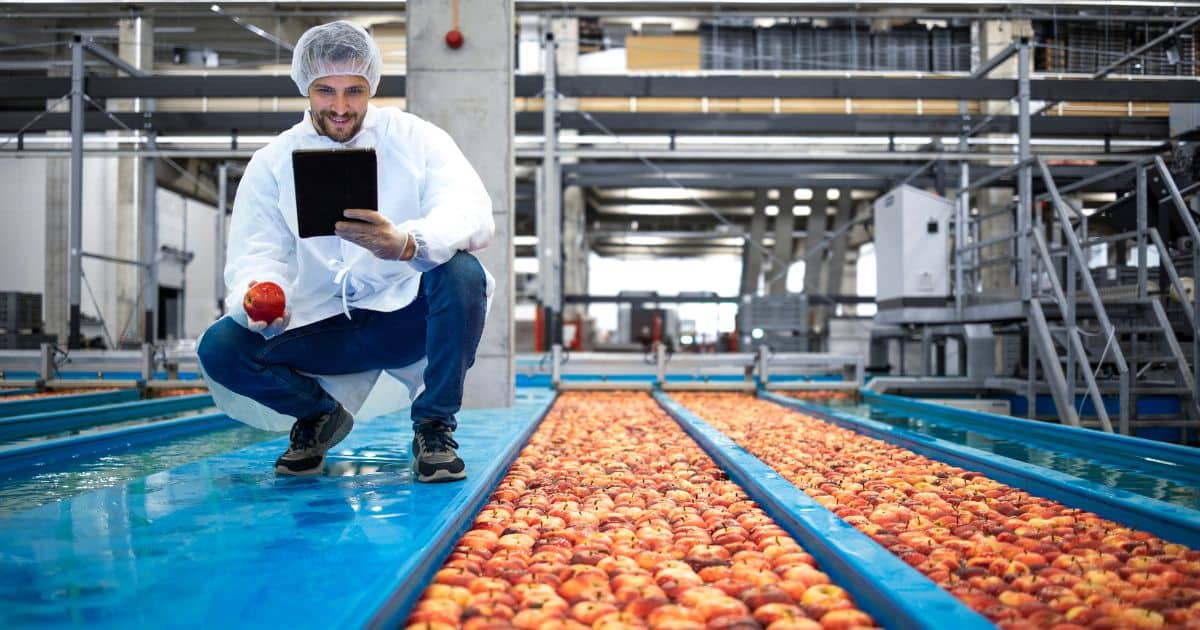Food processing facilities require strict environmental controls to maintain hygiene, prevent contamination, and ensure worker safety. One often overlooked but crucial factor? Air quality. Poor ventilation can lead to temperature fluctuations, excess moisture, and airborne contaminants—any of which can compromise food safety and production efficiency. This is where air make-up units (AMUs) come in.
These systems help maintain proper airflow, replace exhausted air, and regulate temperature and humidity. But how exactly do they work, and why are they essential for food processing?

What Are Air Make-Up Units?
A food processing air make up unit is a ventilation system designed to replace air that has been removed from a facility due to exhaust fans, production processes, or natural air movement. Unlike standard HVAC systems, AMUs specifically focus on balancing indoor air pressure and controlling temperature and humidity to create a safe and stable processing environment.
Food processing plants rely on powerful exhaust systems to remove heat, steam, odors, and contaminants. Without an AMU, this creates negative air pressure, which can pull in unfiltered, unconditioned air from outside, leading to:
- Uncontrolled temperatures – A sudden influx of hot or cold air can disrupt production and impact food quality.
- Condensation & moisture buildup – Excess humidity can encourage mold growth and bacterial contamination.
- Inconsistent air circulation – Poor airflow can leave some areas stagnant and others with excessive air movement, causing uneven cooling or heating.
An AMU works by introducing fresh, filtered, and temperature-controlled air back into the facility, keeping conditions stable and food safety standards high.
How Air Make-Up Units Improve Food Safety
Food processing facilities must meet strict sanitation and safety regulations, and AMUs play a direct role in compliance. Here’s how they contribute to a safer processing environment:
1. Prevents Contaminant Infiltration
Negative air pressure in a facility can pull in airborne contaminants from loading docks, storage areas, and even outdoors. Dust, pests, and bacteria-laden air can easily find their way into food production zones if the air balance isn’t maintained. AMUs regulate air pressure, preventing unfiltered air from entering critical areas.
2. Controls Humidity & Condensation
Excess moisture is a major risk in food processing. High humidity can lead to condensation on equipment, ceilings, and walls, creating an ideal environment for mold, bacteria, and cross-contamination. AMUs regulate humidity levels, reducing condensation and ensuring surfaces stay dry.
3. Supports Proper Ventilation for Airborne Hazards
Certain food processing tasks, such as frying, baking, or packaging, release airborne particles, fumes, or oils. Without adequate ventilation, these particles can settle on surfaces or in the air, increasing the risk of contamination. AMUs continuously circulate fresh air, preventing buildup and maintaining cleaner air quality.
4. Ensures Compliance with Food Safety Standards
Regulations from organizations like the FDA and USDA require food facilities to maintain strict air quality and sanitation standards. A properly functioning AMU helps businesses stay compliant by controlling airborne contaminants, temperature, and moisture—all of which are critical factors in food safety inspections.
Boosting Efficiency in Food Processing with AMUs
Beyond safety, air make-up units significantly improve operational efficiency in food processing plants. A stable and controlled environment helps optimize production, reduce waste, and improve worker comfort. Here’s how:
1. Maintains Consistent Temperatures
Fluctuating temperatures can affect everything from dough proofing in bakeries to chocolate tempering in confectionery plants. AMUs help maintain stable conditions, reducing product inconsistencies and ensuring a more efficient workflow.
2. Reduces Energy Costs
Without an AMU, facilities often struggle with excessive heating or cooling demands, leading to higher energy consumption. AMUs recover and reuse heated or cooled air, improving efficiency and cutting energy costs. Many modern systems also come with variable-speed fans and energy-efficient filtration, further reducing expenses.
3. Improves Worker Comfort & Productivity
Food processing environments can get hot, humid, and uncomfortable, especially in areas with cooking, freezing, or packaging operations. AMUs help regulate temperature and air quality, making conditions more comfortable for workers, which can lead to better productivity and reduced fatigue.
4. Extends Equipment Lifespan
Excess moisture and airborne contaminants can damage machinery, clog filters, and cause corrosion over time. By maintaining clean and dry air conditions, AMUs help reduce maintenance needs and extend the life of food processing equipment.
Choosing the Right Air Make-Up Unit for Your Facility
Not all AMUs are the same, and selecting the right system depends on several factors:
- Facility size & layout – Larger facilities require higher-capacity AMUs with greater airflow rates.
- Type of food processing – High-moisture environments, such as meat and seafood processing, require enhanced humidity control.
- Filtration & air quality needs – Some industries require HEPA or carbon filtration to remove odors, allergens, or airborne bacteria.
- Energy efficiency – Systems with heat recovery, modulating burners, and variable-speed fans offer better energy savings.
Working with an experienced ventilation specialist ensures you get the right AMU setup tailored to your facility’s needs.
The Bottom Line on AMUs in Food Processing
Food safety and efficiency go hand in hand, and air make-up units are a key part of maintaining both. By regulating air pressure, controlling humidity, and ensuring proper ventilation, AMUs help food processing plants stay compliant, improve product quality, and reduce operational costs. Investing in the right system isn’t just about meeting regulations—it’s about creating a safer, cleaner, and more efficient work environment.
